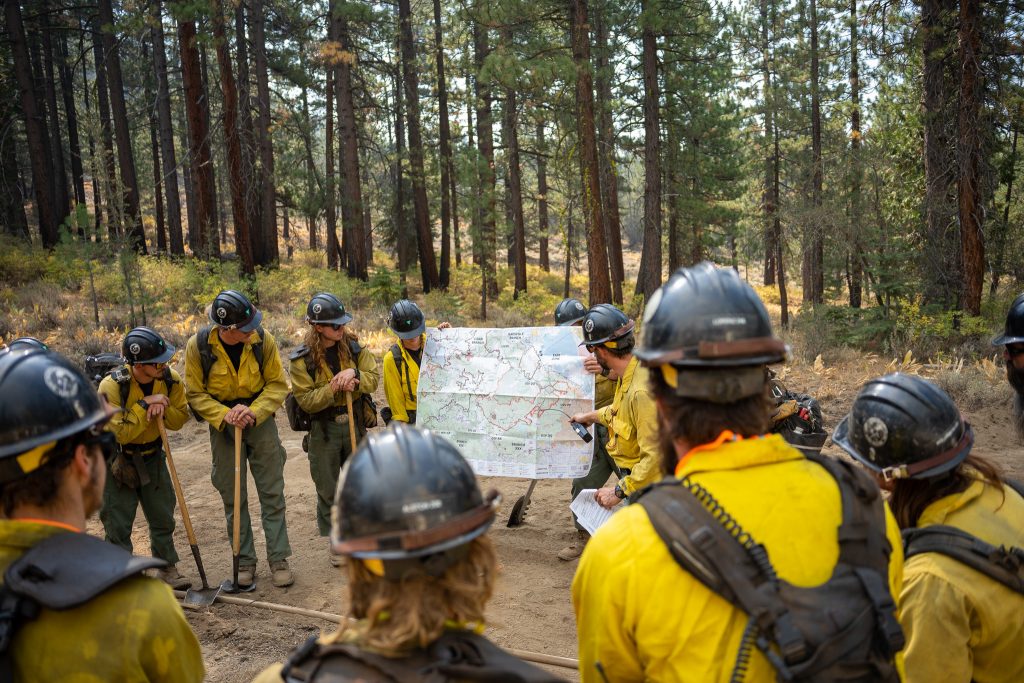NWTF Pledges Support for New 10-Year Strategy to Confront Wildfire Crisis
The National Wild Turkey Federation gives its full support to the USDA Forest Service’s Wildfire Crisis Strategy — announced Jan. 18 by USDA Secretary Tom Vilsack — and will continue to collaborate and bolster its shared stewardship model of conservation with the federal agency, ensuring the nation’s forests are safe, resilient and continue to benefit Americans and their natural resources.
Catastrophic wildfires are an increasing threat to safety, wildlife, homes, livelihoods, communities, infrastructure and are making it especially difficult for Americans to get afield and enjoy their public lands. Western lands, in particular, are bearing the brunt of this crisis, with wildfires year after year growing in severity, duration and overall destruction and loss.
The Wildfire Crisis Strategy was crafted by an interdisciplinary USDA Forest Service team and outlines the implementation plans, priorities and timelines for accomplishing hazardous fuels reduction.
Funds from the new bipartisan infrastructure law will allow the Forest Service to amplify its efforts with other land-owning federal agencies, conservation partners — like the NWTF — tribes, states and local communities to work across boundaries and make a landscape-level impact to combat America’s wildfire crisis over the next decade.
“We are fully supportive of the Forest Service’s decisive action in addressing the current wildfire crisis,” NWTF CEO Becky Humphries said. “We have a 40-year, storied history of conservation success with the Forest Service, and we are ready to take our partnership to whatever means necessary to conserve our natural resources. This will allow the NWTF to deliver its conservation and hunting heritage mission while also making our forests healthier, productive, safer and more resilient to the growing threat.”
The NWTF has been a leader among conservation organizations on Capitol Hill in the early drafting phase of the bipartisan infrastructure bill. Since the passage of the once-in-a-lifetime legislation, the NWTF has been working side-by-side with the Forest Service and directly involved with the Wildfire Risk Reduction Implementation Strategy Team at the national level and in the development of the Wildfire Crisis Strategy.
Over the course of the next 10 years, the Wildfire Crisis Strategy will implement a scaled-up, cross-boundary approach and carry out the treatment of approximately 20 million acres of hazardous fuels on National Forest Service lands — nearly tenfold what the Forest Service currently does to minimize the future threat of catastrophic wildfires — and up to 30 million acres beyond National Forest Service lands.
With over 50 current stewardship agreements, the Forest Service is the NWTF’s strongest agency partner, collaborating on national forests in every Forest Service region in the country to enhance wild turkey habitat and forest health.
The partnership between the NWTF and the Forest Service works especially well because the work done to benefit wild turkey habitat and other wildlife has considerable, far-reaching benefits to overall forest health, water supply, biodiversity and ecological health.

“We are ready for the challenge ahead of us, but it will take continued partnership and determination,” said Tom Spezze, NWTF national director of field conservation and state policy. “We will continue with our shared stewardship model of conservation, doing the right work, at the right place and on a scale that makes a difference. The work we will accomplish will not only benefit wild turkeys and sportsmen and women, but all Americans who enjoy our great outdoors and the resources and treasures they provide.”
“We already have the tools, the knowledge and the partnerships in place to begin this work in many of our national forests and grasslands, and now we have funding that will allow us to build on the research and the lessons learned to address this wildfire crisis facing many of our communities,” said Forest Service Chief Randy Moore. “Working with our partners toward common goals across boundaries and jurisdictions is essential to the future of these landscapes and the people who live there.”
About the National Wild Turkey Federation
When the National Wild Turkey Federation was founded in 1973, there were about 1.3 million wild turkeys in North America. After decades of work, that number hit a historic high of almost 7 million turkeys. To succeed, the NWTF stood behind science-based conservation and hunters' rights. Today, the NWTF is focused on the future of hunting and conservation through its Save the Habitat. Save the Hunt. initiative. Since 2012, this 10-year initiative has already eclipsed goals of conserving or enhancing more than 4 million acres of essential wildlife habitat, recruiting or retaining more than 1.5 million hunters and opening access to more than 500,000 acres for hunting and other recreation opportunities. This critical work will continue to impact wildlife habitat and our great outdoors in the final years of the initiative.
